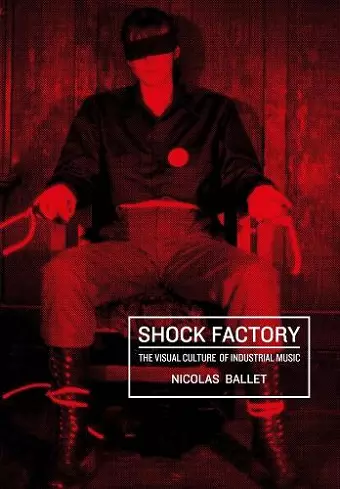Industrial music appeared in the mid-1970s, and far from being a simple sound experimentation phenomenon, it quickly spawned a coherent visual culture operating at the intersection of a multitude of media (collage, mail art, installation, film, performance, sound, video) and initiated a close inspection of the legacy of modernity and the growing, pervasive influence of technology.
Originally British, the movement soon outgrew Europe, extending into the United States and Japan during the 1980s. The sound experiments conducted by industrial bands – designing synthesizers, manipulating and transforming recorded sounds from audio tapes, either recycled or laid down by the artists – were backed up by a rich array of radical visual productions, deriving their sources from the modernist utopias of the first part of the 20th century. Such saturated sounds were translated into abrasive images, manipulated through the détournement of reprographic techniques (Xerox art), that investigated polemical themes: mind control, criminality, occultism, pornography, psychiatry and totalitarianism, among others.
This book introduces the visual and aesthetic elements of 1970s and 1980s industrial culture to a general history of contemporary art by analysing the different approaches taken and topics addressed by the primary protagonists of the movement, who perceptively anticipated the current discourse concerning the media and their collective coercive power.
'A beautiful and somewhat seminal exploration of industrial culture that would certainly appeal to aficionados of the genre, but also to those who want to explore the more academic elements of a scene that ran side by side with punk.
With a plethora of illustrations and exhaustive details collated together, this is a vade mecum for those who opt to explore more than just the clang of industrial music and how this is reflected visually to a wider populace. The level of research and detailed descriptions offers up a majestic read. 9/10'
-- Lee Powell, Vive Le Rock magazine'A deep dive into the shock tactics and artistic hybridizations employed by Early Industrial musicians and the sources they drew from. One look at the table of contents makes you realise what a huge task Ballet has taken on here. [...] Throughout I have struggled to sum up such a wide ranging and immaculately researched and executed book, one that explores, inspires and questions intelligently the concepts and influences behind Early Industrial music and culture, which was both fiercely independent and determinedly underground, yet worked hand in hand with the art establishment and followed in a long tradition of radical and deliberately shocking art that challenged the taboos of the day. Ballet has managed to crack this epic topic open as I have seen few others able to do, and my difficulty in boiling that down into a review is a testament to his diligence and tenacity.
For anyone interested in how true underground culture can develop and grow by building on the foundations set by other art radicals and pioneers, then this is the book for you.'
"A history of industrial music needed to be written. Nicolas Ballet has accomplished this. Thoroughly. This is the book's greatest strength. It explore the significance of noise as a reflection of a world in decay and screaming as a need. And doing it so it reveals a significant connection between industrial music and contemporary art. This is also what makes it an essential book: its contribution to dismantling categories and rethinking history from mixed creative territories."
-- David G. Torres, art critic“Nicolas Ballet’s in-depth analysis and comprehensive research provides a valuable insight into the objectives, attitudes and motives behind the imagery used by exponents of the many forms of industrial music.”
-- Cosey Fanni Tutti“Most publications concerning industrial music dealt with the old cliché of sex, drugs and rock ’n’ roll. For sure there was sex and drugs but rock ’n’ roll was the enemy. So I’m very happy with this very deep dive into the iconography of industrial music. It will give you a much better understanding of what it was/is all about.”
-- F.M. Einheit“If future generations really want to know how it happened, they will now be able to explore the dopamine darkness of this extraordinary history.”
-- Graeme Revell“This book is a thoroughly researched catalogue of ideas, suggestions, gestures, all intended to push existential issues to the front of your mind. To act on them, to truly explore your own. Z’EV sums it up: ‘it’s about being.’”
-- John DuISBN: 9781835950753
Dimensions: unknown
Weight: 1413g
588 pages
